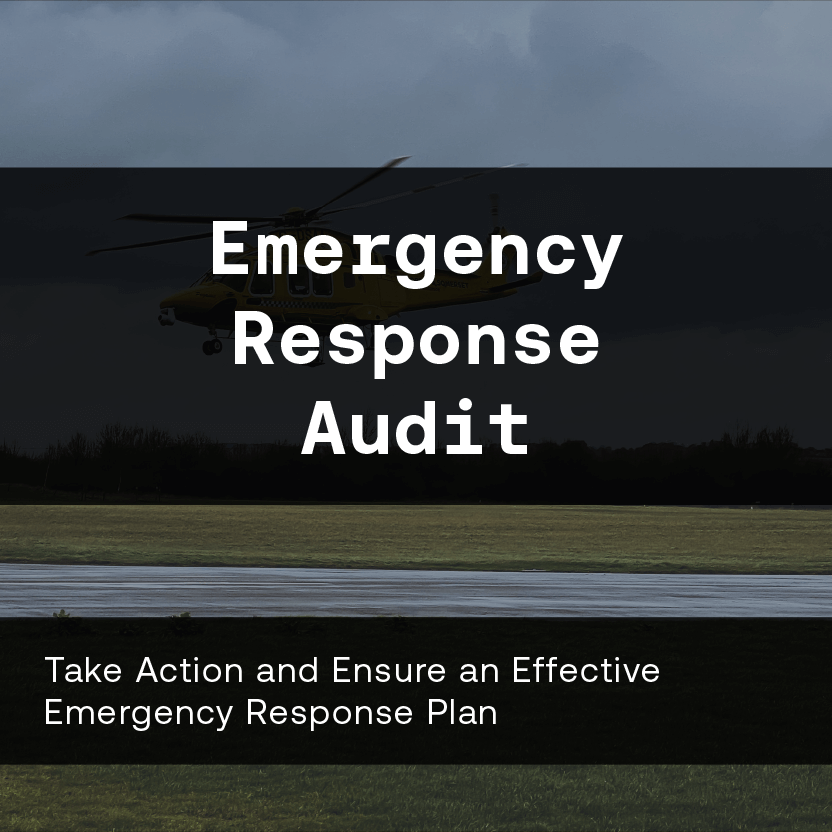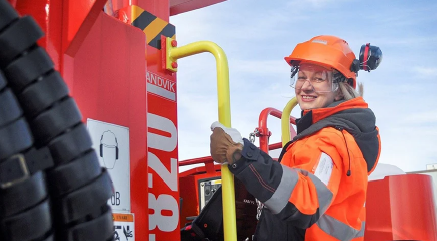Emergency Response Audit Checklist
Take Action and Ensure an Effective Emergency Response Plan
Use this checklist to:
- Discover gaps or improvements to your emergency response process
- Assess emergency response training
- Reduce incident response time

What is an Emergency Response Audit?
An Emergency Response Audit is a systematic examination and evaluation of an organisation's emergency response preparedness. It involves assessing various aspects of the emergency response plan, procedures, resources, and training to ensure that they are comprehensive, effective, and compliant with regulatory requirements. The Emergency Response Audit Checklist serves as a guide for conducting a thorough assessment of the organisation's emergency response capabilities.
When to use the Emergency Response Audit Checklist
The Emergency Response Audit should be used periodically to assess the organisation's readiness and response capabilities in emergency situations. It is essential to conduct the audit when implementing a new emergency response plan, after significant changes to existing plans, or as part of routine safety audits. The audit helps identify gaps, weaknesses, or areas for improvement in the emergency response procedures and enables organisations to take corrective actions to enhance their preparedness.
How to use the Emergency Response Audit Checklist
- Familiarise Yourself: Review the Emergency Response Audit Checklist and understand the scope and criteria of the assessment. Ensure that you have access to all relevant emergency response plans, procedures, and related documents.
- Organise the Audit Team: Assemble an audit team consisting of individuals with relevant knowledge and expertise in emergency response procedures. This may include representatives from safety, operations, human resources, and other relevant departments.
- Conduct the Audit: Follow the checklist to systematically evaluate each element of the emergency response plan and associated processes. Assess the adequacy, completeness, and effectiveness of the plan, resources, training programs, communication protocols, evacuation procedures, and incident response capabilities.
- Document Findings: Document the findings and observations during the audit process. Note areas of non-compliance, deficiencies, strengths, and opportunities for improvement. Provide detailed comments and recommendations for each checklist item.
- Analyse and Prioritise: Analyse the audit findings and prioritise the identified areas for improvement based on their severity and impact on emergency response preparedness. Develop an action plan to address the deficiencies and enhance the organisation's emergency response capabilities.
- Implement Corrective Actions: Implement the recommended corrective actions and improvements based on the audit findings. Assign responsibilities, set timelines, and ensure that the necessary resources are allocated for their implementation.
- Monitor and Review: Regularly monitor and review the progress of the implemented corrective actions. Conduct follow-up audits to verify their effectiveness and ensure ongoing compliance with emergency response requirements.
FAQs
Emergency response audits are typically conducted by internal or external auditors with expertise in emergency management and safety. Depending on the organisation's size and resources, it may involve a dedicated safety or audit team, or external consultants specialising in emergency preparedness and response.
After an emergency response audit is completed, the findings and recommendations are documented in an audit report. This report highlights areas of non-compliance, deficiencies, strengths, and improvement opportunities. Based on the audit report, the organisation can develop an action plan to address the identified issues and enhance its emergency response capabilities.
Organisations should prioritise the findings based on their severity, potential impact on emergency response effectiveness, and the level of risk they pose. Critical issues that directly impact safety and compliance should be addressed with the highest priority, while less critical findings can be addressed in subsequent phases of improvement initiatives.
Have experts on the case when every second counts
Why use SafetyIQ?
Achieving the level of emergency response capabilities needed for some high-risk industries requires significant investment, hiring, upskilling and more. On top of this, if workers are operating on a 24-hour basis, there also needs to be a manager monitoring the safety of these workers. Many companies do not have the scope to do this.
With our Emergency Response Centre, you have an experienced team on the case when every second counts.
How do we do this?
Our Emergency Response Centre monitors your workers 24/7, triages escalations and dispatches local emergency services so that the right people are notified immediately
When matched with our Journey Management or Lone Worker Module, the Emergency Response Centre is added as an escalation contact and will be notified if a worker misses a check-in or triggers an SOS button.













